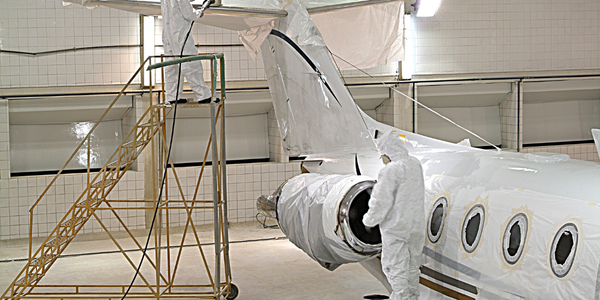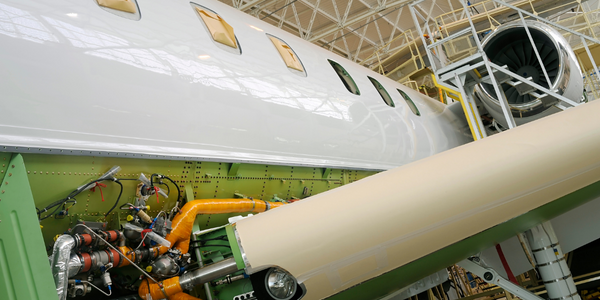Customer Company Size
Large Corporate
Region
- Asia
Country
- China
Product
- Tableau
Tech Stack
- Oracle Database
Implementation Scale
- Enterprise-wide Deployment
Impact Metrics
- Revenue Growth
- Productivity Improvements
Technology Category
- Analytics & Modeling - Real Time Analytics
Applicable Industries
- Aerospace
Applicable Functions
- Sales & Marketing
Use Cases
- Demand Planning & Forecasting
Services
- Data Science Services
About The Customer
China Eastern Airlines is a major Chinese airline that operates international, domestic, and regional routes. It is China's second-largest and the world's ninth-largest carrier by scheduled passengers carried. The airline has a vast amount of data to share with various departments, including management, sales, pricing, and others across the airline business. The data is stored in an Oracle database and displayed through an IE browser. However, the system was slow and made it difficult to utilize the data effectively.
The Challenge
China Eastern Airlines, the second-largest carrier in China and the ninth-largest worldwide, was struggling with data analysis. The airline had a vast amount of data to share with management, sales, pricing, and other departments. However, the existing system, an Oracle database and IE browser, was slow and made it difficult to utilize the data effectively. The airline needed a tool that was not only easy for IT to use but also for business people.
The Solution
China Eastern Airlines discovered Tableau about six months ago and has since developed nine dashboards for separate uses. The dashboards are used by 500 people to analyze marketing, competition, other carriers, and flights-to-revenues. Tableau allows users to drill down to the core of the data easily. The airline uses marketing data from the ARC for the entire aviation industry to analyze market shares of some origin-to-destination (OD) routes. This analysis helps the airline open new flights where the market share is bigger, picking up passengers for increased revenues.
Operational Impact
Quantitative Benefit

Case Study missing?
Start adding your own!
Register with your work email and create a new case study profile for your business.
Related Case Studies.

Case Study
Airbus Soars with Wearable Technology
Building an Airbus aircraft involves complex manufacturing processes consisting of thousands of moving parts. Speed and accuracy are critical to business and competitive advantage. Improvements in both would have high impact on Airbus’ bottom line. Airbus wanted to help operators reduce the complexity of assembling cabin seats and decrease the time required to complete this task.

Case Study
Aircraft Predictive Maintenance and Workflow Optimization
First, aircraft manufacturer have trouble monitoring the health of aircraft systems with health prognostics and deliver predictive maintenance insights. Second, aircraft manufacturer wants a solution that can provide an in-context advisory and align job assignments to match technician experience and expertise.

Case Study
Aerospace & Defense Case Study Airbus
For the development of its new wide-body aircraft, Airbus needed to ensure quality and consistency across all internal and external stakeholders. Airbus had many challenges including a very aggressive development schedule and the need to ramp up production quickly to satisfy their delivery commitments. The lack of communication extended design time and introduced errors that drove up costs.

Case Study
Accelerate Production for Spirit AeroSystems
The manufacture and assembly of massive fuselage assemblies and other large structures generates a river of data. In fact, the bill of materials for a single fuselage alone can be millions of rows of data. In-house production processes and testing, as well as other manufacturers and customers created data flows that overwhelmed previous processes and information systems. Spirit’s customer base had grown substantially since their 2005 divestiture from Boeing, resulting in a $41 billion backlog of orders to fill. To address this backlog, meet increased customer demands and minimize additional capital investment, the company needed a way to improve throughput in the existing operational footprint. Spirit had a requirement from customers to increase fuselage production by 30%. To accomplish this goal, Spirit needed real-time information on its value chain and workflow. However, the two terabytes of data being pulled from their SAP ECC was unmanageable and overloaded their business warehouse. It had become time-consuming and difficult to pull aggregate data, disaggregate it for the needed information and then reassemble to create a report. During the 6-8 hours it took to build a report, another work shift (they run three per day) would have already taken place, thus the report content was out-of-date before it was ever delivered. As a result, supervisors often had to rely on manual efforts to provide charts, reports and analysis.

Case Study
Developing Smart Tools for the Airbus Factory
Manufacturing and assembly of aircraft, which involves tens of thousands of steps that must be followed by the operators, and a single mistake in the process could cost hundreds of thousands of dollars to fix, makes the room for error very small.








